#Anne Marie Baron
Explore tagged Tumblr posts
Text

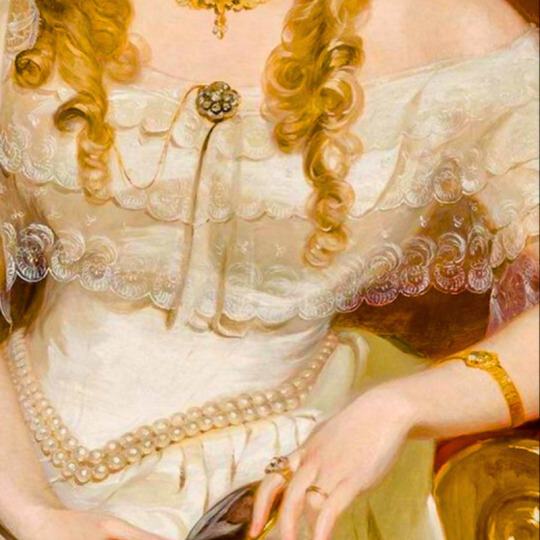



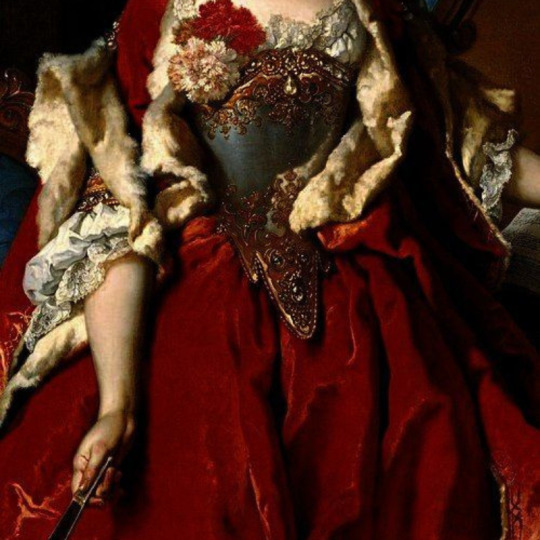

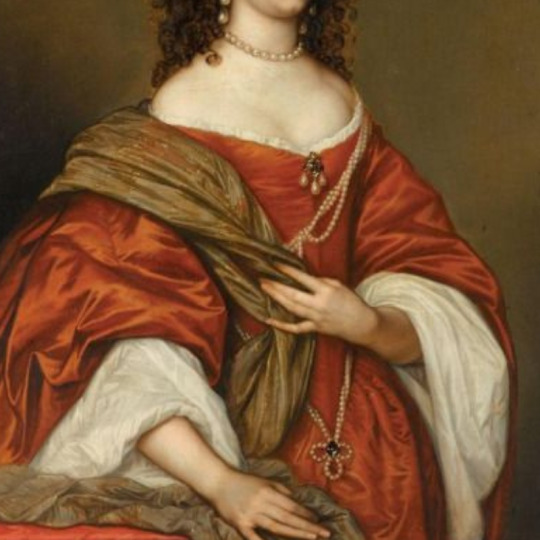
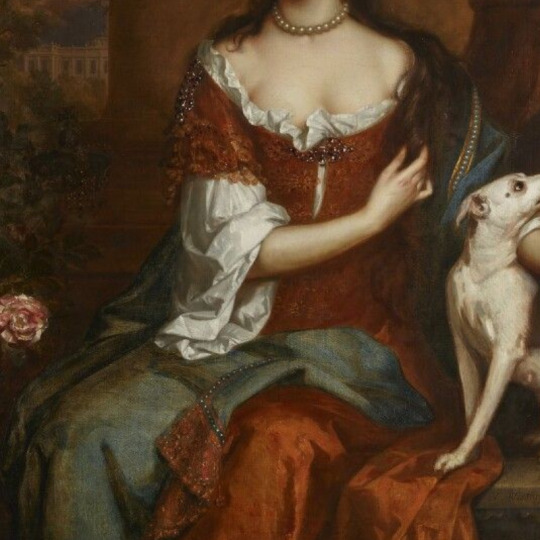


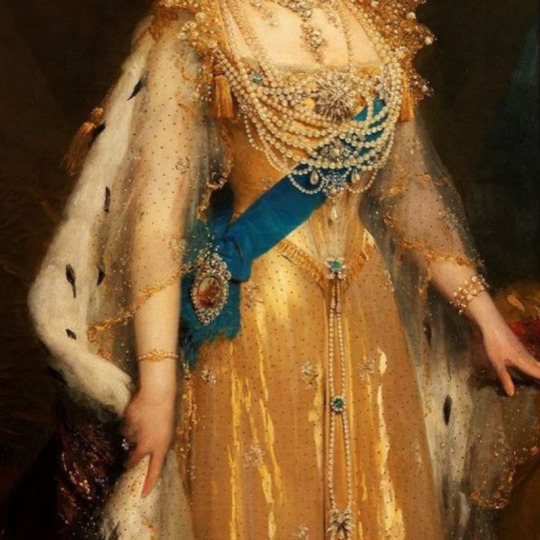
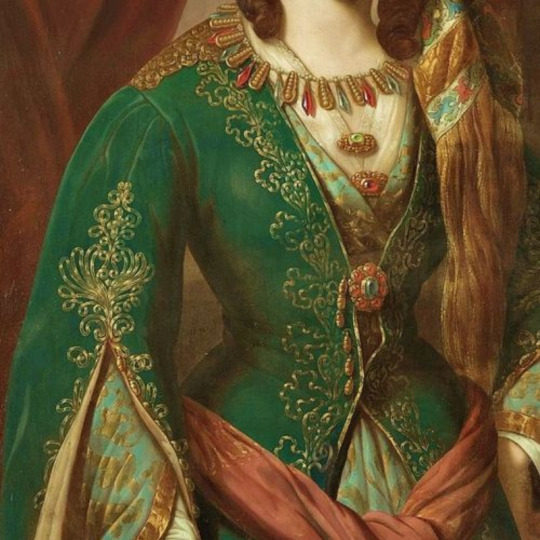

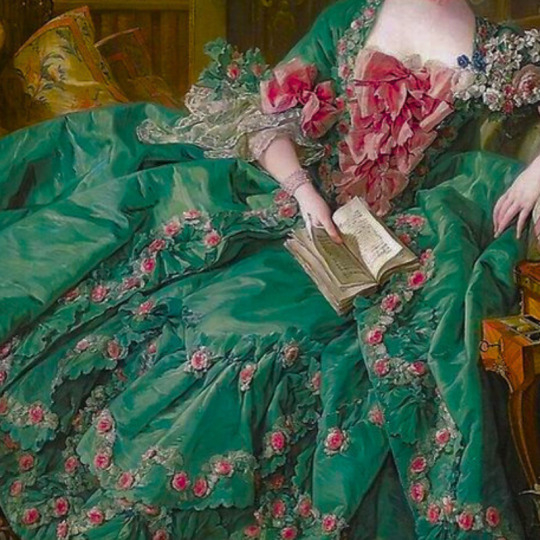
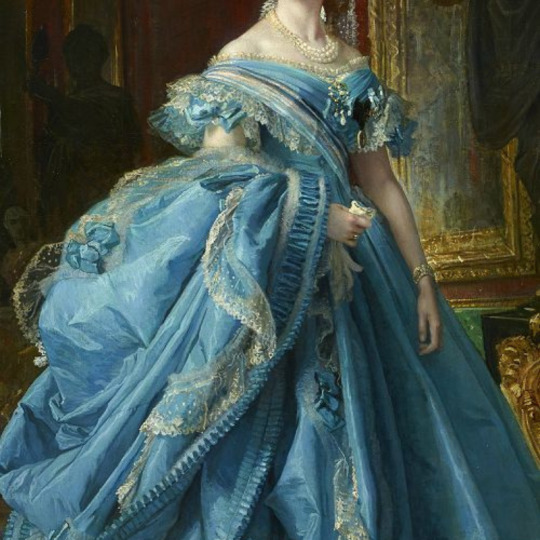
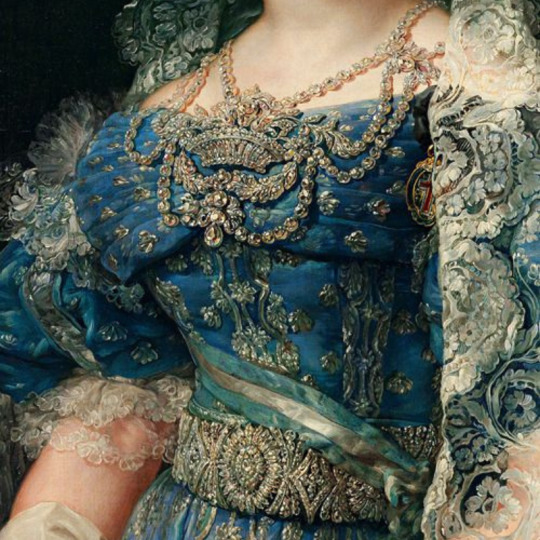
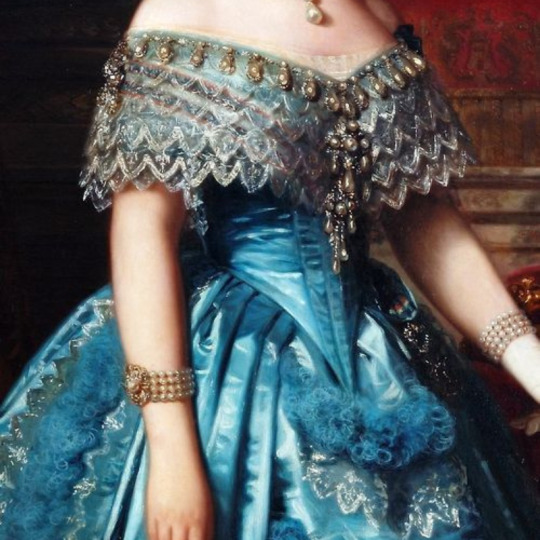


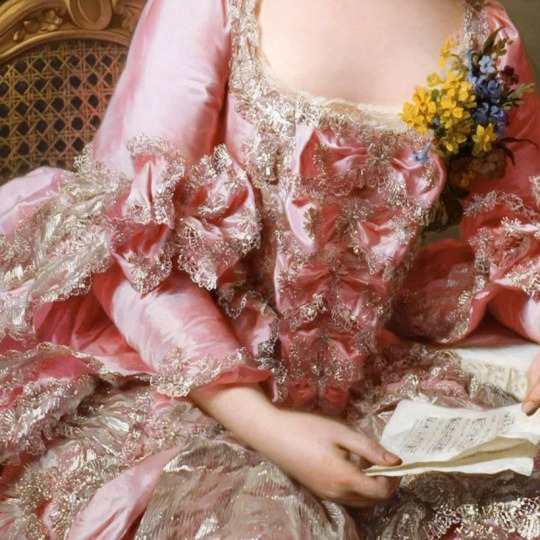

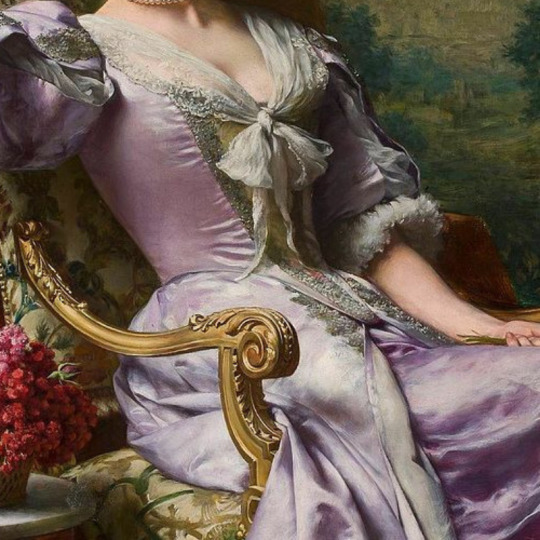



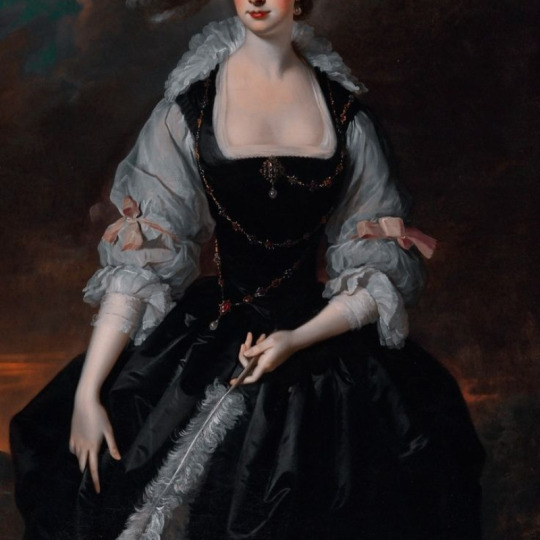
dresses in art
#portrait of the hon. mrs harold by john collier#unknown i cant find this one#portrait of josephine stieler as a bride by joseph karl stieler#portrait of frances anne vane by alexandre jean dubois#portrait of isabelle antoinette barones sloet van toutenberg by nicaise de keyser#portrait of marguerite de seve by nicolas de largillere#portrait of emilia wlodkowska by jozef simmler#portrait of a lady by adriaen hanneman#mary of modena by willem wissing#esther and ahasuerus by artemisia gentileschi#alexandra feodorovna by a malyukov#don't know the artist but its supposed to be the coronation dress of queen alexandra#woman in turkish dress by paul emil jacobs#portrait of juliane by johann heinrich tischbein#portrait of madame de pompadour by francois boucher#princess isabella of asturias vicente palmaroli#maria christina de borbon-dos sicilas reina de espana by vicente lopez y portana#isabella ii queen of spain by federico de madrazo y kuntz#afternoon tea for three by frederic soulacroix#princess maria carolina augusta of bourbon by franz xaver winterhalter#marie suzanne giroust by alexander roslin#the new bracelet by frans verhas#a lady in a lilac dress by wladysaw czachorski#a gust of wind by gaetano bellei#maria grafin zu munster by harry von hente#retrato de dona antonia roca y mestre by angel maria cortellini#frances courtenay by thomas hudson#i loved colorcoding this and i used some from my last edit#art history#history
2K notes
·
View notes
Text
me and my friend were drawing on the discord whiteboard together on call so I bring you:
"d20 fhjy is my fsvorite!"
dimension 20 fantasy high:

baron and lava mary ann are me and the rest are @tuberrrrrr
#d20 fhjy#fantasy high junior year#d20 junior year#dimension 20#kristen applebees#fabian seacaster#fig faeth#figueroth faeth#adaine abernant#gorgug thistlespring#mary ann skuttle#riz gukgak#baron from the baronies#dust baby riz gukgak they could never make me hate you#melinoë.txt#melinoë.png
59 notes
·
View notes
Text
HENRY CAREY, 1ST BARON HUNSDON
HENRY CAREY, 1ST BARON HUNSDON
1526-1596
Henry Carey was the son of Mary Boleyn and William Carey. Mary Boleyn was the older sister of Anne Boleyn (the second wife of King Henry VIII). Mary had been a mistress to King Henry VIII of England before he fell in love with her sister Anne. Mary married William in 1520 and the couple had two children. There were rumours that Henry Carey (and his sister Catherine) were fathered by King Henry VIII, due to their mother’s affair with him.
William Carey died in 1528 from the sweating sickness and Mary became a widow, Anne provided a pension for her. Anne and Henry VIII married in 1533 and their daughter Elizabeth was born.
Mary fell in love with the soldier and commoner, William Stafford and she married him in secret in 1535. When Anne found out about her sisters marriage she was furious and Mary was disowned by her family and banished from court. Mary struggled financially, and Anne finally caved in and helped her by sending her money. Anne was executed in 1536 for treason (Henry Carey was aged 10 when she was beheaded), and what happened to Mary at the end of her life is unknown, she died in 1543 in Essex.
In 1545, Carey married Anne Morganand and all up he had 16 children as well as children with his mistresses. When his cousin Elizabeth became Queen, he became Member of Parliament and was then knighted in 1559. His sister, Catherine became one of Queen’s favourite ladies-in-waiting. Carey owned Hunsdon House which had previously belonged to Queen Mary I of England. In 1564, Elizabeth I made him her personal bodyguard for four years and he later became Lord Chamberlain of the Household in 1585.
In 1587, Carey had an affair with Emilia Lanier the daughter of a court musician, he was 45-years older than her, during this time he paid her a pension. In 1529, Lanier, aged 23 gave birth to his child and Carey married Lanier off to her cousin (who was the Queen’s musician). Lanier gave birth to his son, who was also called Henry in 1593.
Carey died at Somerset House in 1596 and is buried at Westminster Abbey.
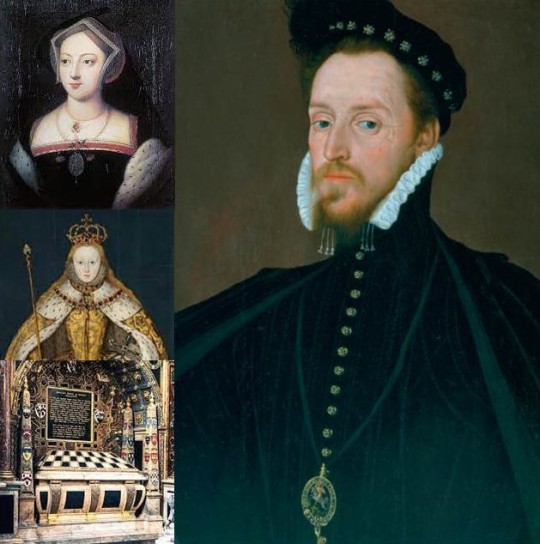
#henrycarey #henrycarey1stbaronhunsdon #anneboleyn #maryboleyn #henryVIII
6 notes
·
View notes
Text

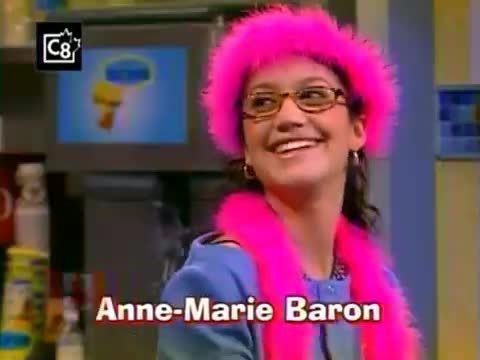





Fries With That - YTV - April 4, 2004 - December 18, 2004
Sitcom (52 episodes)
Running Time: 50 minutes
Stars:
Jeanne Bowser as Pattie Johnson
Giancarlo Caltabiano as Ben Shaw
Morgan Kelly as Alex Kurzi
Stefanie Buxton as Robyn Cohen
Anne-Marie Baron as Tess Laverriere
Li Li as Meiyan
Kent McQuaid as Eddie
Heidi Foss as the Principal
Arthur Holden as Head Office Guy
#Fries With That#TV#YTV#Sitcom#2004#2000's#Jeanne Bowser#Giancarlo Caltabiano#Morgan Kelly#Stefanie Buxton#Anne-Marie Baron
5 notes
·
View notes
Text
RCJ Midi : Les Secrets de la princesse de Cadignan
Pour son film « les secrets de la princesse de Cadignan » (actuellement au cinéma) est au micro d’Anne-Marie Baron pour RCJ Midi. Ecoutez l’émission en intégralité ci-dessous : Arielle Dombasle vous donne rendez-vous au cinéma l’Arlequin (76 Rue de Rennes, 75006 Paris) pour une projection exceptionnelle du film “Les Secrets de la princesse de Cadignan” en sa présence.Informations et…

View On WordPress
#Anne-Marie Baron#Arielle Dombasle#Champ de Bataille#Cinéma#film#Honoré de Balzac#Julie Depardieu#La Comédie Humaine#Les Secrets de la princesse de Cadignan#Michel Fau#Radio#RCJ#RCJ Radio
0 notes
Text
The Queen’s Uncle: Sir William Parr, 1st Baron Parr of Horton
Sir William Parr, 1st Baron Parr of Horton (c. 1483 – 10 September 1546) was the son of Sir William Parr of Kendal and his wife Elizabeth Fitzhugh. His mother was a niece to Warwick, the Kingmaker and thus a cousin of Anne Neville, Duchess of Gloucester and Queen of England as the wife of Richard III. Lady Elizabeth and her mother, Lady Alice FitzHugh, rode in the coronation train for Anne when…
View On WordPress
#Alice Neville#baron parr of horton#Elizabeth FitzHugh#lady alice fitzhugh#lady anne digby#Lady Elizabeth Woodhull#Lady Mary Tresham#lady maud lane#lord Parr of Horton#Mary Salisbury#maud parr#the queens uncle#william parr
0 notes
Text

i just fell to my knees at a walmart

tweets that would kill a victorian child
#d20 live show spoilers#AND MARY ANN IS A BAD KID INSTEAD OF GORGUG#d20#rainposting#yes i watched the clips of the cody loose baron marriage yes it was glorious
49 notes
·
View notes
Text
Updated Bad Kids NemesisAlert Files
Figueroth Faeth
Nemeses: Cuspin Clark, Porter Cliffbreaker, Lola Embers, Ruben Hopclap, Alston Hughes
Chosen Nemesis: Porter Cliffbreaker
Notes: Mr. Clark has declared Wanda Childa as his nemesis, known to be an alias of Ms. Faeth. Alston Hughes is mandated by KVX policy to change his nemesis should Ms. Faeth become a client of the bank.
Gorgug Thistlespring
Nemeses: Arthur Aguefort, Sprak LeFevre
Chosen Nemesis: Mary Ann Skuttle
Notes: Mr. Aguefort has declared his intent to remain Mr. Thistlespring's nemesis until such time as Mr. Thistlespring acquires one of his own. Mr. LeFevre recently named Mr. Thistlespring as a nemesis on ground of "theft of prized possession," and Mr. Aguefort cannot be reached at this time to confirm his wishes. Ms. Skuttle has declined to name an official nemesis.
Adaine Abernant
Nemeses: Aelwyn Abernant, Baron from the Baronies
Chosen Nemesis: Oisin Hakinvar
Notes: Ms. Abernant recently changed her nemesis to Mr. Hakinvar from Arianwen Abernant. Mr. Hakinvar recently changed his nemesis from Ms. Abernant to Riz Gukgak.
Fabian Aramais Seacaster
Nemeses: Chungledown Bimothy, Quincey
Chosen Nemesis: Gilear Faeth
Notes: Gertie Bladeshield recently rescinded her nemesis vow against Mr. Seacaster. We do not know who Quincey is, only that his vow of enmity against Mr. Seacaster is powerfully violent. Mr. Seacaster has asked if he can have two nemeses, and settled on Mr. Faeth when informed he could not.
Kristen Chilis Applebees
Nemeses: Robert Dawn
Chosen Nemesis: Kipperlilly Copperkettle
Notes: Ms. Applebees declared "Catlitter Cunthead" as her nemesis, in Ms. Abernant's handwriting.
Riz Gukgak
Nemeses: Kipperlilly Copperkettle, Oisin Hakinvar, Telemaine Lominelda
Chosen Nemesis: Baron from the Baronies
Notes: Mr. Hakinvar recently changed his nemesis to Mr. Gukgak, on grounds of "killed loved one and/or ancestor."
This was a lot of fun. Did I miss anyone? Get in the comments.
#d20#d20 edit#d20 memes#fantasy high#junior year#junior year spoilers#fhjy#brennan lee mulligan#fig faeth#gorgug thistlespring#adaine abernant#fabian seacaster#kristen applebees#riz gukgak#dimension 20#nemesis alert
488 notes
·
View notes
Text










Mary Delany (1700 - 1788), an English artist known for her "paper-mosaics" and her lively correspondence, created 950 works of botanical decoupage.
"With the plant specimen set before her she cut minute particles of coloured paper to represent the petals, stamens, calyx, leaves, veins, stalk and other parts of the plant, and, using lighter and darker paper to form the shading, she stuck them on a black background. By placing one piece of paper upon another she sometimes built up several layers and in a complete picture there might be hundreds of pieces to form one plant. It is thought she first dissected each plant so that she might examine it carefully for accurate portrayal..."
- from Mrs. Delany: her Life and her Flowers, by Ruth Hayden, 1980/2000. (The author was a descendant of Delany's sister Anne.)
Born the daughter of Colonel Bernard Granville, she was a niece of George Granville, 1st Baron Lansdowne. She was coerced into an unhappy marriage with the sixty-year-old Tory MP Alexander Pendarves when she was still only seventeen; her husband died in his sleep seven years later, making her a widow at the age of twenty-four. With little means and no home of her own, she spent time living with various relatives and friends. But having the social freedom allowed by her widowhood, she was able to indulge her artistic and scientific interests.
At the age of forty-three, she married again, to Dr. Patrick Delany, an Irish clergyman. A year later they moved to Dublin, where Dr. Delany had a home. Both husband and wife were very interested in botany and gardening. After twenty-five years of marriage, most of it spent in Ireland, her husband died, leaving her a widow again at the sixty-eight. She had always been an artist, but during her second marriage she had had the time to hone her skills, not only as a gardener, but with her needlework, drawing, and painting.
It was only in her second widowhood, though, when she was in her early seventies, that she began to assemble detailed and botanically accurate depictions of plants in decoupage, using tissue paper and hand coloration. She created nine-hundred and eighty-five of these works, calling them her "Paper Mosaics." She continued making them until her sight began to fail in the last year of her life. She died a month before her eighty-eighth birthday. The ten volumes of her Flora Delanica were eventually bequeathed to the British Museum.
(From the blog of artist and writer Stephen O’Donnell. He is married to writer and graphic designer Gigi Little, with whom he sometimes performs. Their book, The Untold Gaze – a collection of Stephen’s paintings paired with short fiction by 33 authors – was published in October of 2018.)
76 notes
·
View notes
Text
The fabulous history of Cartier and the Royal Family
‘Jeweller of Kings and King of Jewellers,’ was how King Edward VII described the House of Cartier, half a century after Louis-Francois Cartier established what would become the jeweller of choice for British royalty.
Founded at 29 rue Montorgueil in Paris, the company was taken over by his son, Alfred, in 1874. But, it wasn’t until Alfred’s three sons – Louis, Pierre and Jacques – took the helm that Cartier would go on to supply high society with the finest of jewels.

The French Maison’s relationship with the Royal Family began in 1902 after Pierre Cartier opened a branch in London at the time of the coronation of King Edward VII. One of the firm’s earliest royal patrons, after ordering 27 tiaras from Cartier for the event, King Edward VII rewarded the company with a Royal Warrant, making Cartier an official purveyor of jewels to the crown.

There’s the glittering diamond Collier Résille, with detachable emerald and ruby pendants, commissioned by Queen Alexandra in 1904 and later inherited by Queen Mary in 1926. (ABOVE)
Edward’s brother, King George VI was also a great client of the firm, acquiring many pieces for his wife. As well as the numerous gifts, the Queen Mother also inherited several extraordinary Cartier jewels from Dame Margaret Helen Greville, the wife of the Honourable Ronald Henry Greville, 2nd Baron Greville, including two pairs of Art Deco diamond earrings. The Greville Chandelier earrings, composed of platinum and fancy-cut diamonds, were given to Queen Elizabeth II as a wedding present in 1947. The Greville Peardrop earrings, crafted by Cartier in 1938, are made of platinum and diamond, including two 20-carat pear-shaped diamonds, and were inherited by the Queen in 2002.


The most famous piece of Cartier in Queen Elizabeth II’s jewellery box, however, is undoubtedly the Halo tiara, purchased by King George VI as a gift for the Queen Mother in 1936. Gifted to the Queen as an 18th birthday present, over the years, the Queen has loaned the showpiece to Princess Margaret, Princess Anne and, most recently, the Duchess of Cambridge for her wedding to Prince William in 2011.


'The British royal family was so important to the success of the Cartiers,' adds Brickell, 'not just in England but internationally and the pieces Cartier made for them remain among some of the most exquisite, well-known jewels of all time.'
#jewel;cartier#misc#british royal family#princess anne#princess of wales#queen elizabeth ii#the queen mother#queen mary#thejewelcatalogue
46 notes
·
View notes
Text


Princess Anne, The Double Duchess (1825-1906)
read more about her below!
Princess Anne was the third child of Queen Mary II and Prince Charles, the Earl of Statford. Although the Queen had resented her daughter for her gender, her father Prince Charles showered the princess with love and affection. Queen Mary distanced herself from her children after the birth, with historians agreeing she most likely suffered from post-partum depression. Princess Anne grew up to be a lively and joyful girl who enjoyed reading literature and had a passion for dance. Princess Anne married Prince Jean of Magnolia, the Duke of Claremont in 1849. The marriage was arranged as a part of Queen Mary’s agenda to improve relations between the two former rival countries. Anne disliked the stuffy opulent court of Magnolia and longed for a simpler life in Windenburg. Princess Anne struggled to integrate well into Magnolian society and had an infamous rivalry with her sister-in-law, Crown Princess Marie Louise. Princess Anne loathed her husband, who paid little attention to his wife. It was rumored for many years that the Prince had an affair with his secretary, the Baron of Aubin. Princess Anne had two miscarriages before giving birth to a son, Prince Philippe, Count of Vermandois in 1855. While Princess Anne was visiting her mother at the San Myshuno Palace in 1862, her husband died, leaving the young princess a widow. Princess Anne decided to return to San Myshuno with her young son and lived with her mother at Statford Castle. Princess Anne would elope with her childhood friend, James Montague, 8th Duke of Vermont in 1864. The couple would have a happy marriage which produced a daughter, Lady Mary Montague. Social circles in San Myshuno High Society dubbed the princess the "double duchess". For the first year and a half of marriage, the queen refused to speak to Anne who in turn refused to attend court. However, her younger sister, Princess Mary, was able to mend the relationship between them. Although the Queen was opposed to the match initially, she later described the Duke as "her favorite son-in-law". Princess Anne spent most of her time away from court, and instead in the countryside of Victoria. Princess Anne lived a happy and fulfilled life and died at her country estate, Vermont Park in 1906 surrounded by her grandchildren.
#statfordlegacy#sims4#legacy#sims#royallegacy#royalty#ts4 royals#ts4#ts4 royal#ts4 legacy#ts4 render#sims 4 render#sims render#sims 4 edit#ts4 edit#sims edit#extras
49 notes
·
View notes
Text

Pendant in the shape of a ship; wooden hull mounted in enamelled gold, the rigging strung with pearls; Europe, about 1580
By family tradition the pendant was a present from Elizabeth I to Henry Carey, (1526-1596), 1st Baron Hunsdon, first cousin of The Queen. He was the son of Mary Boleyn, sister of Anne Boleyn, Elizabeth's mother.
He had a prominent career as a courtier and soldier. He played an important role in the suppression of the rebellion of the northern earls in 1570, was appointed Lord Chamberlain in 1586, and was a commissioner at the trial of Mary, Queen of Scots in 1587. When the Armada threatened in 1588, he commanded Elizabeth's bodyguard at Tilbury in 1588.
86 notes
·
View notes
Text
Relationships/Situationships for each Bad Kid (I am using these terms very liberally)
Fig: Dr. Asha, Commissioner Runce Buggins, Ayda Augefort
Gorgug: Zelda Donovan, Ragh Barkrock, Squeem, U.N.I.T, Mary Ann Skuttle
Adaine: Oisin Hakinvar
Fabian: Aelwyn Abernant, Ecaf, Ivy Embra, Mazey Phaedra
Kristen: Tracker O'Shaughnessy, Gertie Bladeshield
Riz: Baron
#honorable mentions:#adaine and zayn darksadow: she may not want a ghost boyfriend but i think they're cute#fabian and ragh: fabian's never explicitly displayed interest for ragh but there have definitely been some vibes#gorgug and the hangman: canonically kissed but probably experimentally more than anything#by this criteria perhaps i should also remove ragh from gorgug's list but whatever#let me know what ive missed!#dimension 20#d20#fantasy high#fhjy#fantasy high junior year#fhsy#fhfy#fhjy spoilers
36 notes
·
View notes
Text
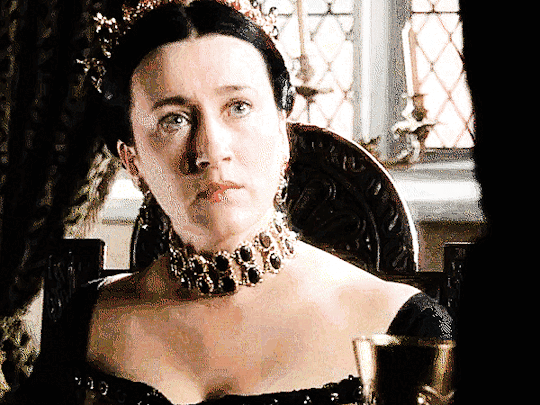
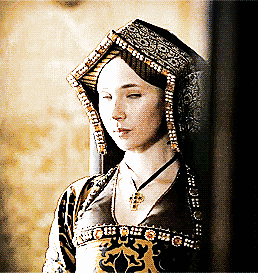
Katherine of Aragon & Gertrude Courtenay
Gertrude was daughter of William Blount, fourth Baron Mountjoy, a distinguished humanist scholar and chamberlain to Katherine of Aragon. As the daughter of such an esteemed gentleman at court, Gertrude received an outstanding education and served Katherine of Aragon as one of her maids of honor. The Queen oversaw the education of her young charges, so Gertrude benefitted from the royal patronage. In 1519, she married to Henry VIII’s first cousin Henry Courtenay, Earl of Devon. Gertrude was the wife and mother of the last Plantagenets at the Tudor court.
Gertrude was one of Queen Katherine of Aragon's attendants at the Field of the Cloth of Gold in 1520. If the Chateau Vert rings any bells it’s probably because it was the masque that saw Anne Boleyn, freshly returned from France, debuting at the Tudor court in March 1522. A little-known fact is that Gertrude Courtenay also took part in it, playing the role of Honour. In 1525, Gertrude’s star was on the rise once again when her husband was created the Marquess of Exeter, making Gertrude a Marchioness.

Gertrude was among the key political players of Henry VIII’s court during the infamous annulment, known as the Great Matter, commencing in 1527 and ending in 1536. The Marchioness of Exeter was among the high-profile ladies-in-waiting who staunchly supported Katherine of Aragon. Seeing how popular the Queen was among the women at court, Anne Boleyn used her influence and dismissed some of them, including Gertrude.
During the summer of 1531, Katherine of Aragon was banished from court. The Queen received gifts and letters from her trusted friends and former servants like Gertrude Courtenay in her exile.

Henry VIII had had enough of his wife’s resistance, and he married the pregnant Anne Boleyn in secret on 25 January 1533. On 31 May, Anne rode in a procession from the Tower of London to Westminster Hall—it was the most impressive part of the coronation festivities. The Marchioness of Exeter opened the cavalcade, a clear sign that she was a high-profile lady-in-waiting. Gertrude had no other choice but to follow the King’s orders and accompany the new Queen: a clear sign to Katherine’s followers that unconditional obedience was required. Gertrude’s husband managed to avoid appearing at Anne’s coronation. Whether the illness Henry Courtenay suffered in June was real or feigned cannot be discerned now, but Gertrude later “much lamented her husband’s sickness at the time of the Queen’s coronation, and said that though her person was there, her heart was at home with her husband”.
Gertrude’s prominent role during the christening of Anne Boleyn’s daughter was calculated as an insult to Katherine of Aragon. Henry VIII selected Gertrude as one of Princess Elizabeth’s godmothers. The disgusted Marchioness complained to her friends that “she really wanted to have nothing to do with this” but took part “so as not to displease the King”.
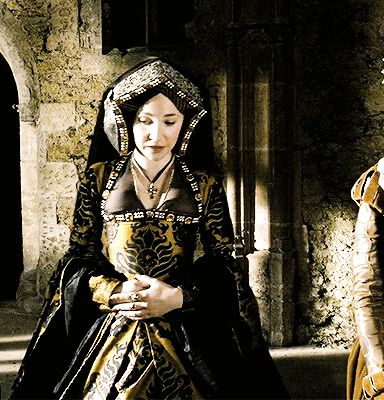
Like her father, Gertrude walked on eggshells trying not to displease the King, but ultimately it was impossible for her to accept Anne Boleyn as the new Queen. The Catholic Marchioness soon found herself in a position of open defiance of Henry VIII and his second wife. Gertrude gave ear to the Nun of Kent’s prophecies (for which the Nun was executed in 1534). She remained fiercely loyal to Katherine of Aragon and Princess Mary in their fell from grace. She exchanged letters with Eustace Chapuys, ambassador of the Holy Roman Emperor Charles V, and even visited him in disguise during the period when it was dangerous to become Henry VIII’s enemy. How much Gertrude knew of the proposed match between Reginald Pole and Princess Mary remains unknown, but she certainly favoured the idea of the Anglo-Imperial war. In late 1535, Katherine of Aragon’s health began to deteriorate and it became clear to everyone that she was mortally ill. She died on 7 January 1536 amid rumours of poisoning.
Sources:
Sylvia Barbara Soberton, The Forgotten Tudor Women: Gertrude Courtenay. Wife and Mother of the last Plantagenets
https://tudorsdynasty.com/ten-things-you-didnt-know-about-gertrude-courtenay-marchioness-of-exeter/?amp=
#catherine of aragon#katherine of aragon#catalina de aragon#henry viii#gertrude blount#gertrude courtenay#anne boleyn
20 notes
·
View notes
Text
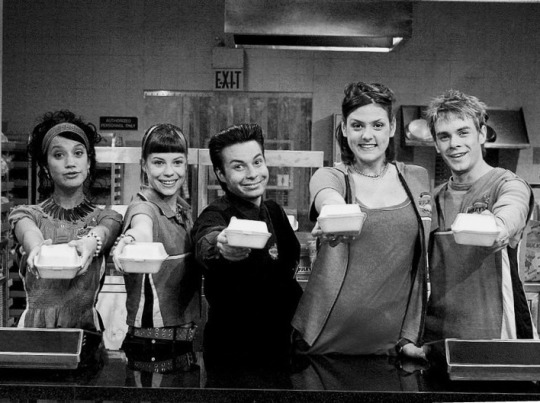
Anne-Marie Baron, Stefanie Buxton, Giancarlo Caltabiano, Jeanne Bowser and Morgan Kelly in "Fries With That"
#Fries With That#TV#Anne-Marie Baron#Stefanie Buxton#Giancarlo Caltabiano#JAeanne Bowser#Morgan Kelly
3 notes
·
View notes
Text
Celta, my apologies if I’m overstepping “Tumblr protocol,” but here’s an excellent anon submission from another Tumblr blog that addresses the issue of who has authority (the Crown or Parliament?) to issue/remove UK royal and peerage titles. This was submitted to cat-with-the-emerald-tiara tumblr. (I don’t have an active tumblr…hope it’s ok to submit this to you this way…)
Anon Submission
A rebuttal to defence of Charles.
The matter of titles has been a very curious one to investigate. Parliament has repeatedly rejected all attempts to discuss the titles, nevermind doing anything about them whether at public request via petitions or private members bills. At the height of title stripping fervour by petitions, parliament famously requested legal council and paperwork on the matter.
Each time, they send out the same response: Royal titles are a matter for the monarch NOT parliament.
This goes against the accepted understanding that titles are the purview of parliament so what gives?
Constitutional / legal experts have began to discuss the matter. The most recent published opinion from such a scholar was illuminating.
Here is link to read for yourself:
https://middletemplar.org.uk/to-strip-or-not-to-strip-prince-harrys-titles/
To summarise his opinion:
ALL titles held by members of the royal family are the gift of the monarch and given by royal perogative without oversight of parliament, privy council, Prime Minister or UK government.
This includes birthright titles.
To be clear: HRH, Prince, Duke, Earl, Baron, Knight.
Since they are given without parliament, privy council, Prime Minister or UK government oversight, they are are NOT in the purview of parliament, privy council, Prime Minister or UK government and therefore can’t be removed by those bodies. This explains parliament’s repeated response to all those petitions and private members’ bills.
The Scholar goes on to explain that ALL titles held by members of the royal family are granted by LP. Whether this is the famous 1917 LP or a more recent LP eg the one written to grant William and Edward their titles of Wales and Edinburgh.
Any title granted by LP can be removed by LP. No need to check with parliament.
He doesn’t mention it, but we have a historic example of HRH Princess Patricia of Connaught ( Queen Victoria’s granddaughter from one of her sons) who was stripped by LP in 1919.
Scholar explains removal by LP point by explaining a fundamental misunderstanding of the 1917 LP.
It famously sets out the criteria of who can hold the HRH/ Prince titles, but in doing so it also stripped many, many Princes of both UK and Germany of HRH/ HSH/ HH Princes titles that they already had.
If Queen Mary wasn’t already Queen and married to George V, she would have been stripped because her maiden title was HSH Princess Mary of Teck. Her claim to the UK throne came via her mother who was a first cousin to Queen Victoria. Under the new 1917 LP rules, Queen Mary had no right to Prince of the UK or any Highness style and would be stripped of it by the 1917 LP.
However, the scholar reiterates that the only thing Charles has no power to effect is the Line of Succession and the Counsellors of State because these have parliament, privy council, Prime Minister or UK government oversight. He can make suggestions as he fid to add Anne and Edward, but it is not in his purview to remove or block anyone from these 2 bodies. Only Parliament can do that.
Finally, anon mentions that Harold sued or threatened to sue Charles to get Prince titles for the Sussex children.
Without researching this, i can tell you categorically that this did not happen. Charles as Monarch is literally above the law. His royal perogative is both un-justiceable and un-reviewable as the scholar reminds us. In regular language that means Charles can not be sued. Nor can he be arrested. No subjected to the law of the land. There is no lawyer who would attempt to try because of this ironclad law. And no judge or court will take the case.
All lawyers and courts act on behalf of the Monarch and justice is carried out in his name so how can he sue himself?!
What is more likely to have happened is that the Sussexes grabbed the titles, and Charles allowed it to keep the peace which is a frequent excuse given by the Palace for their inaction when the Sussexes step over the line.
Notice that unlike William and Edward, there was no acknowledgement, BP announcement or publication in the London Gazette which are 3 required formal processes for new titles. Instead BP just updated website.
With their ingrained victimhood, it’s curious that the Sussexes didn’t dare grab or complain about their kids’ HRH styles. No one is at war with the kids so if they are Prince then they are also HRH, but the Sussexes only grabbed Prince.
In conclusion, Charles as monarch absolutely had the power to strip Harold completely to become plain Mr Henry Mountbatten-Windsor, but he chooses not to do it. Just like he allowed the Sussexes to grab Prince titles for their kids without objection when he knows that they can’t sue him if he withheld said titles.
*
Hi Nonny,
Thank you for sending this in.
This is the link to the post: https://the-cat-with-the-emerald-tiara-1.tumblr.com/post/749747114107600897/anon-submission
Cat’s blog is discussing the topic right now and there have been various posts on it, all of which are illuminating.
My understanding is that parliament can not remove royal titles. I believe they have said this when they rejected a petition to remove Harry’s titles.
I also think that parliament can remove normal peerage titles, but only for cases where it is specified in the law.
Harry’s Duke title is, I think, classed as a royal title and as such can only be removed by the King.
I appreciate the link to the scholar in the post above. I like to see what other people who know more than I do think about this.
The hard thing for me is to remember that there are two tiers of titles in the UK, the peerage (normal duke, earl, baron etc) and the royals (HRH, Prince, Princess but also royal Duke, royal Earl, royal Baron etc - titles with the normal names but which are held by royals.).
23 notes
·
View notes